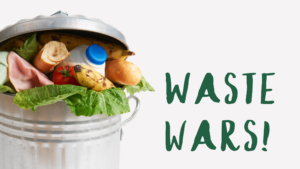We worked with our friends over at the Healthy Eating Advisory Service (HEAS) to bring you the following blog which looks at the links between food, mood and learning.
It is well known that fuelling children with the appropriate foods helps support their growth and development. But did you know there is a growing body of research showing that what children eat can also affect their mood, mental health and learning?
The research suggests that eating a healthy and nutritious diet can improve mental health [1] , enhance cognitive skills like concentration and memory [2] [3] and improve overall academic performance [4]. Children should be eating plenty of minimally processed foods from the five food groups in order to achieve a balanced and nutritious diet. The five food groups include:
- fruit
- vegetables and legumes/beans
- grains (cereal foods)
- lean meat and poultry, fish, eggs, tofu, nuts and seeds, and legumes/beans
- milk, yoghurt, cheese and/or their alternatives
Consuming too many nutritionally poor foods and drinks that are high in added fats, sugars and salt, such as lollies, chips and fried foods has been connected to emotional and behavioural problems in children and adolescents [5]. In fact, young people that have the unhealthiest diets are nearly 80% more likely to have depression than those with the healthiest diets [6].
Schools and parents working together
Starting at home
You can start to improve your child’s learning outcomes and mental wellbeing by promoting healthy eating at home, and through the foods and drinks you pack in their lunchbox.
Some ideas to get you started:
- Check out HEAS’ Pick’n’Mix 1-6 lunch box ideas
- Use non-food rewards at home to help children develop healthy relationships between food and behaviour
- Be a positive role model by choosing healthy foods and drinks at home
- Make sure water is freely available.
Making healthy changes at school
Schools also play a key role in influencing healthy eating habits, as students consume around 37% of their energy intake for the day during school hours! [7]
A New South Wales survey found that up to 72% of primary school students purchase foods and drinks from the canteen at least once a week [8].
Which means that even if parents ensure lunchboxes are packed with healthy and nutritious foods, an unhealthy school canteen could ultimately affect your kids’ food preferences in a negative way.
Making changes to improve the health and wellbeing of children is not the job of one person but involves commitment across all places in which children live, learn and play, including schools.
Here’s what your school can be doing to ensure that they are supporting student’s health:
- Have a healthy canteen menu in line with the Schools Canteen and Other School Food Services Policy.
- Make sure water is freely available across your school and allow students to have a water bottle with them in class.
- Plant a vegetable garden and use the produce you grow in cooking activities and at the canteen. Check out the Stephanie Alexander Kitchen Garden Foundation program for more ideas.
- Schedule ‘brain food’ breaks during the day to encourage students to eat fruit and vegetables in class.
- Engage all school staff to become positive role models, visibly taking care of their health by eating healthy foods and drinks at school.
- Source fresh produce from your local community, such as local markets and food growers.
Many schools have found success after making healthy changes, including Marlborough Primary School, who said:
“When kids eat a healthy diet with a wide variety of fruit and vegetables in that diet, they actually perform better in the classroom.
They’re going to have better stamina with their work, and at the end of the day it means we’ll get better learning results which will impact on them in the long term.”
If you are interested in learning more, head over to HEAS and check out their range of free resources that support and empower organisations including schools to make healthy changes. Or you can access their free school resources here.
[1] Jacka FN, et al. Associations between diet quality and depressed mood in adolescents: results from the Australian Healthy Neighbourhoods Study. Aust N Z J Psychiatry. 2010 May;44(5):435-42. https://www.ncbi.nlm.nih.gov/pubmed/20397785
[2] Gómez-Pinilla, F. (2008). Brain foods: The effects of nutrients on brain function. Nature Reviews Neuroscience, 9(7), 568-578. Retrieved from http://www.ncbi.nlm.nih.gov/pmc/articles/PMC2805706
[3] Bellisle, F. (2004). Effects of diet on behaviour and cognition in children. British Journal of Nutrition, 92(2), S227–S232
[4] Burrows, T., Goldman, S., Pursey, K., Lim, R. (2017) Is there an association between dietary intake and academic achievement: a systematic review. J Hum Nutr Diet. 30, 117– 140 doi: 10.1111/jhn.12407. https://onlinelibrary.wiley.com/doi/pdf/10.1111/jhn.12407
[5] Jacka FN, Kremer PJ, Berk M, de Silva-Sanigorski AM, Moodie M, Leslie ER, et al. (2011) A Prospective Study of Diet Quality and Mental Health in Adolescents. PLoS ONE 6(9): e24805. https://doi.org/10.1371/journal.pone.0024805
[6] Jacka FN, et al. Associations between diet quality and depressed mood in adolescents: results from the Australian Healthy Neighbourhoods Study. Aust N Z J Psychiatry. 2010 May;44(5):435-42. https://www.ncbi.nlm.nih.gov/pubmed/20397785
[7] Bell AC, Swinburn BA. What are the key food groups to target for preventing obesity and improving nutrition in schools? Eur J Clin Nutr2004;58:258–63
[8] Hardy L, King L, Espinel P, et al. NSW Schools Physical Activity and Nutrition Survey (SPANS) 2010: Full Report (pg 97). Sydney: NSW Ministry of Health, 2011






